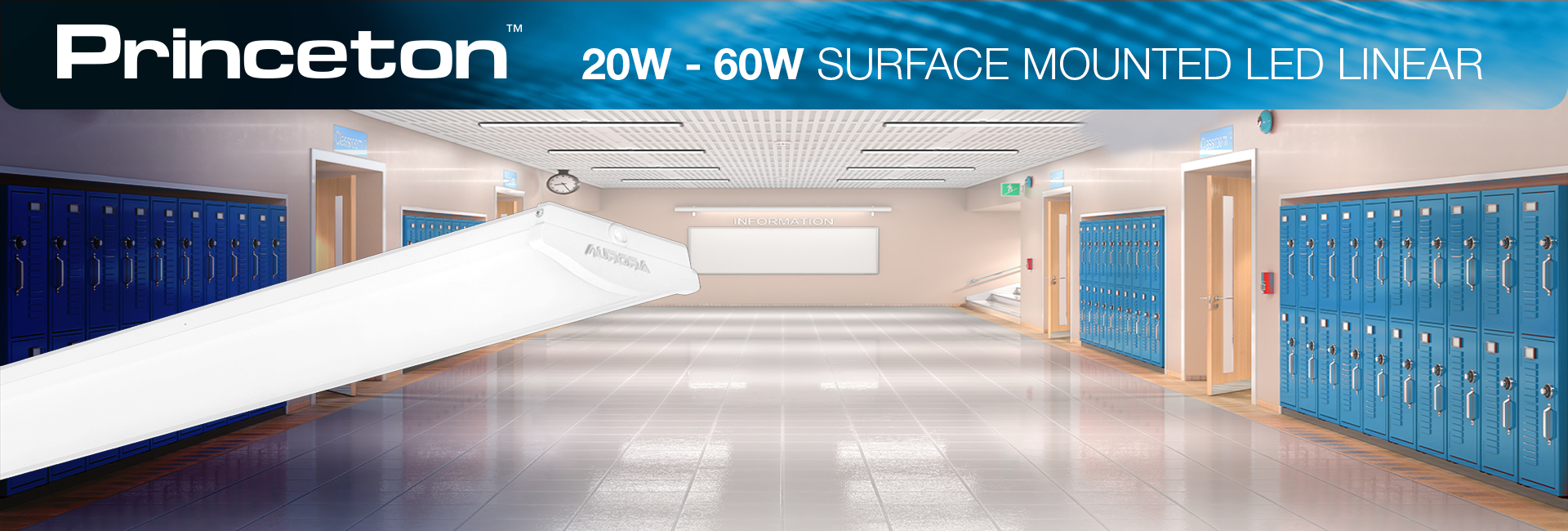How to Choose Lighting for Educational Settings
When it comes to lighting a school or other educational establishment, there are a number of factors to consider. By taking these into account, the lighting can best meet the needs of this type of environment.
Linear is ideal for a variety of areas
For dining halls, gyms and corridors, linear lighting is a great fit. Not only does it suit larger areas, rather than trying to obtain enough light with spotlights, they are ideal for long runs. This suits corridors and long thin rooms such as indoor sports courts. The Princeton™ linear range from Aurora Lighting is a good example of linear lighting that has been specifically designed to meet the needs of educational environments.
Achieving energy savings
By switching to LED luminaires from outdated technologies such as fluorescent lamps, huge energy savings can be realised. Taking the Princeton range as an example again, these luminaires offer up to 50% energy savings in comparison to their traditional fluorescent alternatives. By making the switch, schools and other settings could bring their energy bills down, something which is particularly important amidst the energy costs crisis.
Matching footprints reduce disruption
By choosing a linear LED luminaire that matches the footprint of traditional fluorescent lighting, disruption can be significantly reduced. Very little or even no repair or redecoration will be needed as the old light can be removed and the new one fitted over it. This means less downtime for areas of the school while the work is undertaken, and lower costs of carrying out the works.


















